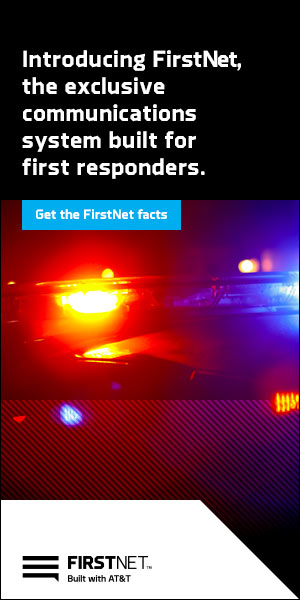Comm Center News
Calhoun County celebrates launch of new public safety radio system (MI)
BATTLE CREEK, Mich. — The Calhoun County Consolidated Dispatch Authority celebrated its newest radio communication system going online on Tuesday afternoon. The department celebrated the upgraded technology that comes from a 9-1-1 millage approved in 2022.
Brown County using text follow-ups for 911 hang-ups to ensure public safety (WI)
BROWN COUNTY (WLUK) - So far this year, Brown County emergency operators have received about 4,000 hang-up calls. People inadvertently or unknowingly calling 911and then hanging up because they don't have an emergency. Technology can be helpful in times of need, but...
Short staffing at Honolulu police dispatch leads to long 911 wait times, union says (HI)
Dispatchers at the Honolulu Police Department are being forced to work overtime because of short staffing. Some 911 callers are waiting as long as 20 minutes to ask for help. Employees face “vitriol and verbal abuse ” from supervisors. The allegations were outlined in...
Comment Dates Set for Proposed Rules on Improvements to Next Generation 911 Networks
On June 4, 2025, the FCC released a Public Notice announcing the due dates for comments on a Further Notice of Proposed Rulemaking (FNPRM) proposing improvements to ensure the resiliency, reliability, interoperability, and accessibility of Next Generation 911 (NG911)...
Fire Technology: Leveling Up 9-1-1 Dispatch
Jason Moore learned how technological innovation at a South Carolina 9-1-1 dispatch center eases the burden on call-takers, accelerates response to citizens in need and improves fire department effectiveness. Public safety answering points (PSAPs), which more commonly...
Peninsula Regional 911 Callers Can Now Share Real-Time Video and Photos (VA)
The Peninsula Regional Emergency Communications Center, which serves York and James City counties, and the cities of Poquoson and Williamsburg, recently announced the roll-out of new next-generation 911 tools that will help people better communicate with first...
Public safety coalition urges Senate to fund Next Generation 911 in ‘One Big Beautiful Bill Act’
WASHINGTON — A coalition of public safety leaders, emergency response professionals and industry groups has called on the Senate Commerce Committee to include critical funding for Next Generation 911 (NG911) technology in President Donald Trump’s “One Big Beautiful...
N.C. 911 Board Celebrates Inaugural Graduates of 911 Communications & Operations …
N.C. 911 Board Partnered with Richmond Community College to Develop First-of-Its-Kind Program for 911 Telecommunicators In recognition of a milestone nearly five years in the making, N.C. 911 Board members and staff recently celebrated the inaugural graduates of...
Metro council seeks probe into 911 center workplace complaints (TN)
NASHVILLE, Tenn. (WZTV) — Metro Council has voted to ask the mayor’s office to investigate alleged toxic workplace conditions at the Davidson County Emergency Communications Center, which handles 911 calls for Nashville.
Catoosa opens $22M public safety complex with local 911 dispatch (OK)
A major upgrade to public safety services is now live in the City of Catoosa. The city has opened a new $22 million public safety complex, which includes a $6 million 911 communications center. For the first time in nearly three decades, emergency and non-emergency...
Ulster County breaks ground for $34.5M emergency communications center (NY)
Ulster County officials, emergency personnel, and the project team of lead architect Urbahn Architects, construction manager The Palombo Group, consulting architect Alfandre Architecture and others gathered for a groundbreaking ceremony to mark the start of...
‘Left or right’: Man allegedly asked 911 operator to choose how he should stab his father (OK)
DEL CITY, Okla. (WKRC) - A man allegedly called 911 and forced the dispatcher to choose where he would next stab his father, telling her, "Say left or right, and this will be on you." According to a report from local outlet KWTV, a 911 dispatcher received a call...
Nashville 911: Ready for CMA Fest and Urging Smarter Location Sharing with what3words (TN)
CMA Fest 2025 is almost here—and Nashville 911 is ready. The Department of Emergency Communications (DEC) will be on the ground supporting public safety, keeping the city informed, and making sure help gets where it’s needed.
New Lee County Public Safety Building emphasizes employees and efficiency (FL)
The Lee County Public Safety Center, formerly Lee Emergency Operations Center, has been improved and expanded and reopened this week after a year-and-a-half of work. The enlarged Public Safety Center now features a second building attached to the existing Emergency...
Wayne County EMS dispatcher goes into cardiac arrest on the job and is saved by coworkers (NY)
LYONS, N.Y. – Wayne County EMS Coordinator Paul Fera says a dispatcher went into cardiac arrest while working in the Wayne County 911 Center on May 26. Fera says coworkers noticed right away and got her to the floor to start CPR. He says the supervisor grabbed the AED...
Quick-thinking Ill. dispatcher helps save newborn’s life
Lee County dispatchers Kelly Boos and Jessica Knipple helped guide the father as the baby was in distress with the umbilical cord wrapped around its neck “It’s a miracle of life right before our eyes,” Lee County 911 Director Shelley Dallas said at Thursday’s award...
Leon County to install a Next Generation 911 system (FL)
Leon County's 911 system is getting an upgrade. It's called Next Generation 911. ABC 27’s Brieanna Smith talked to Emergency Management Director Kevin Peters who says it's designed to adapt to current and future technologies.
Alaska city turns to cloud to enhance emergency dispatch services
For rural communities, relying on neighboring cities to help during times of crisis isn’t always guaranteed, according to one Alaska city official, whose government has turned to the cloud to strengthen and protect its emergency dispatch services against potential...
911 dispatchers respond to work hours, overtime proposal: ‘We are like zombies’ (WI)
BROWN COUNTY, Wis. (WBAY) - The Brown County Board of Supervisors heard from 911 dispatch callers Wednesday night on concerns about a proposed overtime policy. The county currently has 20 vacancies for dispatch positions -- up from 15 in March -- and despite past...
California’s extended pause on next-generation 911 project raises concerns
California's next-generation 911 project has been paused for months, but at least one former official says everything is fine. alifornia’s yearslong next-generation 911 rollout has been marked by safety concerns and delays, with some dispatch centers experiencing...
Upcoming Webinar
4.9 GHz Band: Review of the FCC Order
On October 22, 2024, the Federal Communications Commission (Commission) released its Eighth Report and Order (Eighth R&O) regarding utilization of the 4940-4990 MHz (4.9 GHz) band that protects incumbent users as requested by us, the Public Safety Spectrum Alliance (PSSA). This Eighth R&O addresses a number of issues related to the use of this band by public safety. Please join us for a briefing on this order and how it impacts public safety.
This presentation will be led by Chief Jeff Johnson (ret) and Attorney Jason Karp, one of the nation’s leading experts in public safety spectrum regulations.
REGISTER
Subscribe to Comm Center News
Get the latest News, Articles, and Insights from AllThingsECC.com weekly in our newsletter.
Stay Up to Date With The Latest News & Updates
Share Your Story
Join our community to share your experience and connect and collaborate with colleagues.
Join Our Newsletter
Get the latest News, Articles, and Insights from AllThingsECC.com weekly in our newsletter.
Follow Us
Stay connected with the latestEmergency Communications News, Articles & Information.



